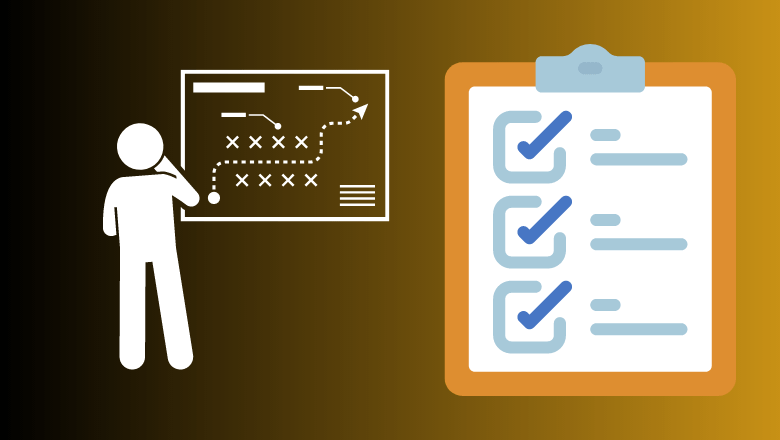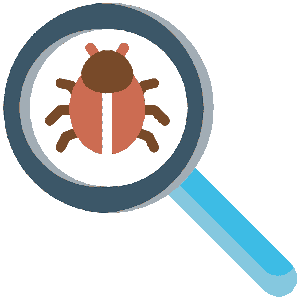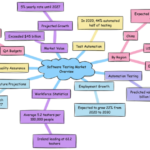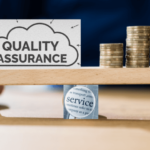
Quality assurance (QA) teams play a crucial role in software development. A talented QA team can make or break a project.
This article will walk you through hiring a great QA team.
1. Define Your Needs and Goals
Before starting the hiring process, you must identify what you need from a QA team. Consider factors like your project’s size, budget, and skills required. Knowing your goals allows you to create a clear job description that attracts suitable candidates.
2. Set a Budget
Determine the amount you’re willing to spend on your QA team. Consider salaries, benefits, and resources needed for the team to succeed. Establishing a budget helps you make informed decisions throughout the hiring process.
3. Look for the Right Skills
The perfect QA team will possess a mix of technical and soft skills. Essential technical skills include:
- Test automation
- Manual testing
- Performance testing
- Security testing
- Test management tools
Soft skills to look for:
- Problem-solving
- Communication
- Adaptability
- Attention to detail
- Teamwork
4. Create a Job Posting
Once you’ve defined your needs and goals, create a detailed job posting. Include the required skills, experience, and job responsibilities. Be sure to mention any unique aspects of your company culture or project to attract the best candidates.
5. Search for Candidates
You can start searching for candidates now that your job posting is live. Utilize job boards, social media, and networking events to find potential team members. Be open to various sources of talent, such as freelancers or remote workers, to ensure you’re considering a diverse pool of candidates.
6. Evaluate Resumes and Portfolios
As applications arrive, carefully review resumes and portfolios. Pay attention to relevant experience, skills, and certifications. Look for candidates who have worked on similar projects or have a proven track record of success in the QA field.
7. Conduct Interviews
Interviewing candidates allows you to assess their skills, experience, and cultural fit. Ask technical questions to gauge their knowledge and problem-solving abilities. Also, inquire about their experience working in teams and handling difficult situations.
8. Assign Test Projects
For top candidates, assign a small test project to evaluate their practical skills. This step gives you insight into how they work and their ability to meet deadlines and quality standards.
9. Check References
Contact the references provided by your top candidates. Ask about their work ethic, problem-solving abilities, and team dynamics. This information can help you make a well-informed decision when choosing your QA team.
10. Make Your Selection
After completing the above steps, you should know which candidates best fit your project. Select your new QA team members and start the onboarding process.
11. Provide Training and Resources
Ensure your new QA team has the necessary training and resources to succeed. Offer ongoing support and encourage collaboration and communication within the team.
12. Monitor Progress and Provide Feedback
Keep track of your QA team’s progress and offer constructive feedback to help them improve. Celebrate successes and address any challenges that arise.
13. Promote a Growth Mindset
Nurture a growth mindset within your QA team, encouraging them to learn from mistakes and continuously improve. By promoting a culture of learning and self-improvement, you’ll foster team members who are motivated to enhance their skills and contribute to the team’s success.
14. Foster Collaboration and Open Communication
Create an Encourage team members to share ideas, ask questions, and discuss concerns where team members feel comfortable sharing ideas, asking questions, and discussing problems. Encourage open communication and collaboration, enabling your QA team to work efficiently and effectively.
15. Establish a Clear Reporting Structure
Define a reporting structure that ensures accountability and transparency. Clarify roles and responsibilities, and assign a team lead or manager to oversee the team’s performance. A well-defined reporting structure helps your QA team stay organized and focused on its goals.
16. Implement Continuous Integration and Deployment
Introduce continuous integration (CI) and continuous deployment (CD) practices to streamline testing and deployment. By automating these processes, your QA team can work more efficiently and identify issues earlier in the development cycle.
17. Schedule Regular Team Meetings
Hold regular team meetings to discuss progress, address challenges, and celebrate successes. These gatherings allow team members to share updates, seek assistance, and collaborate on solutions to any obstacles.
18. Encourage Professional Development
Support your QA team’s professional development by providing opportunities for further education, training, or certifications. By investing in your team’s growth, you’ll cultivate a group of skilled professionals who are motivated to contribute to the success of your projects.
19. Evaluate Team Performance Periodically
Regularly assess your QA team’s performance through metrics, Feedback, and observations. Use these evaluations to identify areas for improvement, provide constructive Feedback, and recognize exceptional performance.
20. Adapt and Iterate
Be prepared to adapt your strategies and processes as your project evolves and your team grows. Continuously assess your QA team’s needs and make adjustments to ensure their ongoing success.
21. Create a Test Strategy and Plan

Collaborate with your QA team to develop a comprehensive test strategy and plan that outlines the testing approach, test levels, tools, and resources required. A well-crafted test plan ensures all team members are aligned and enables the team to focus on delivering high-quality results.
22. Balance Manual and Automated Testing
Determine the right mix of manual and automated testing to optimize your QA process. While automation offers efficiency and consistency, manual testing allows for a more exploratory approach. Striking the right balance ensures thorough testing and maximizes the team’s strengths.
23. Encourage Test-Driven Development (TDD)
Promote the practice of test-driven development among your development and QA teams. This approach involves testing before writing the code, leading to more robust and maintainable software. TDD helps prevent defects and streamlines the QA process.
24. Utilize Risk-Based Testing
Implement risk-based testing to prioritize test cases based on the potential impact of defects. By focusing on high-risk areas, your QA team can allocate their time and resources more effectively, enhancing the overall quality of your software.
25. Integrate Usability Testing
Incorporate usability testing into your QA process to evaluate how user-friendly and accessible your software is. Engaging real users or utilizing usability heuristics allows your team to identify and address user experience issues early in the development cycle.
26. Employ Shift-Left Testing
Adopt a shift-left testing approach by involving your QA team early in development. This proactive strategy helps identify and resolve issues earlier, reducing the overall cost and effort required for fixing defects.
27. Leverage Metrics and Analytics
Use metrics and analytics to monitor your QA team’s performance and software quality. Key performance indicators (KPIs) like defect density, test coverage, and pass/fail rates provide valuable insights that can help you make data-driven decisions and improve your QA processes.
28. Maintain a Test Repository
Establish a centralized test repository where your QA team can store, manage, and update test cases, scripts, and documentation. A well-organized repository improves efficiency, promotes reusability, and ensures consistency in testing practices.
29. Facilitate Cross-Functional Collaboration
Encourage collaboration between your QA team and other departments, including development, product management, and customer support. Cross-functional collaboration leads to a more comprehensive understanding of your software’s requirements and enhances the overall quality of your product.
30. Implement a Feedback Loop
Create a feedback loop that allows your QA team to learn from past experiences, continuously improve processes, and adapt to changing requirements. Regularly reviewing Feedback and implementing changes helps your team stay agile and ensures they deliver high-quality software.
Conclusion about QA team
A successful QA team requires a mix of specialized knowledge, processes, and strategies unique to the field. By incorporating expert insights and best practices into your team’s workflow, you’ll create a robust and efficient QA process that contributes to developing high-quality software.
Building and managing a successful QA team requires a thoughtful approach encompassing goal-setting, communication, collaboration, continuous improvement, and professional development.
Hiring a great QA team involves a systematic approach that includes defining your needs, setting a budget, searching for candidates, evaluating their skills, and providing training and resources.
Edward, a distinguished technical writer, is esteemed for his deep knowledge in software testing and quality assurance. Born and raised in the bustling city of Los Angeles, his technological journey is marked with remarkable milestones.
His academic pursuit of computer science at Columbia University in the early 1990s marked the genesis of his career, immersing him in the realms of programming and software development.
Upon graduating, Edward joined Cisco Systems, delving into groundbreaking networking technologies and handling complex software projects. His subsequent role at Bank of America enabled him to enhance crucial financial systems’ stability, security, and efficiency.
Edward later transitioned to Adobe, where he spearheaded robust test strategies, bolstering the user experience of Adobe’s products and reinforcing his position as an invaluable industry asset.
With his unwavering dedication to excellence, Edward is a respected advocate in his field. His journey from Columbia University to industry giants like Cisco Systems and Adobe underscores his commitment to honing his craft. His fervor, expertise, and relentless quest for excellence render him a true pioneer in software testing and quality assurance.







